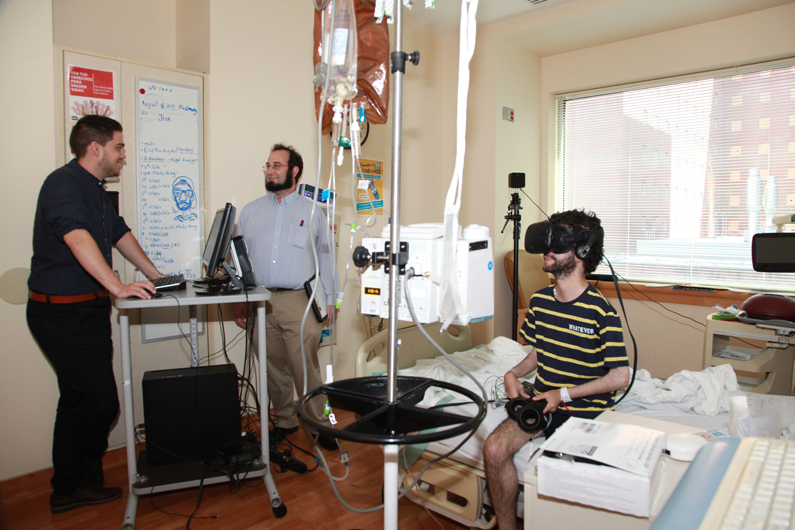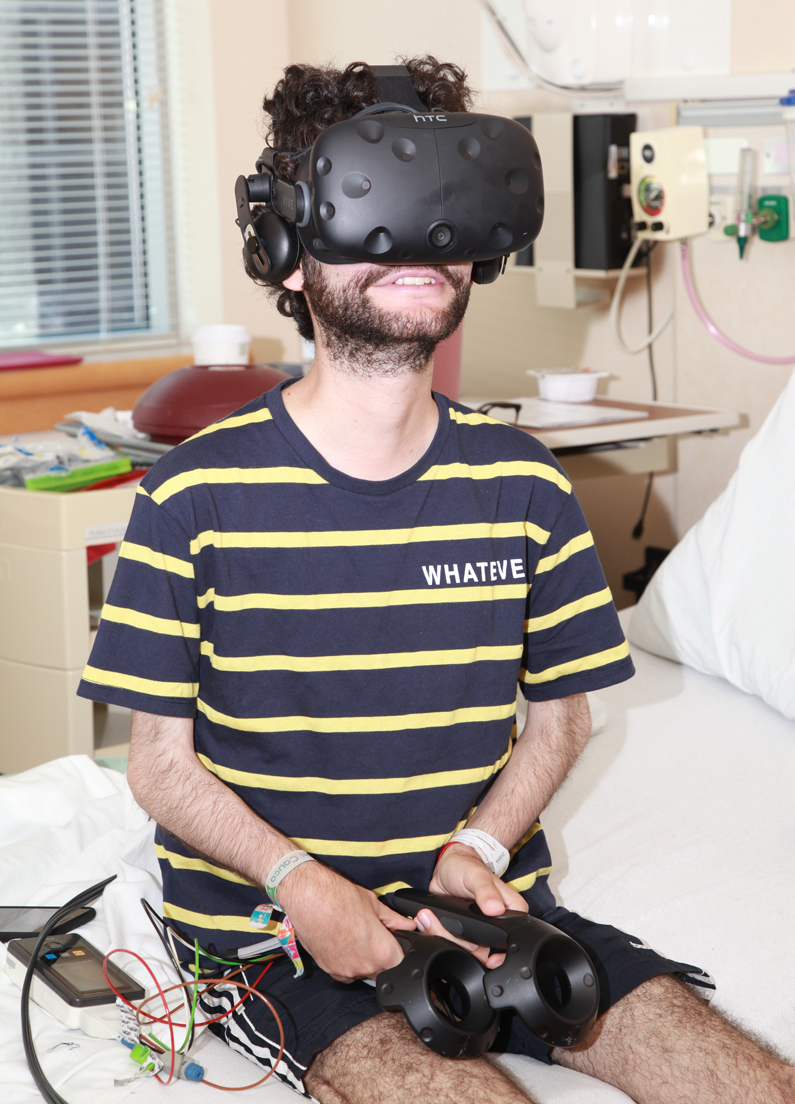Virtual reality goes to the patient room


For many patients, one of the most difficult parts of their protocol is simply staying in a hospital. It is not blood draws or testing, but the prolonged hospital stay.
Dr. Adam Schiffenbauer, associate research physician and principle investigator on a National Institute on Environmental Health Sciences protocol, is working to bring virtual reality to his patients' rooms to help make their stay just a bit easier.
"Scientific groups at NIH have been using virtual reality for research purposes to reduce pain and to assist in rehabilitation medicine," Schiffenbauer said. "But, we're trying to bring it to our patient's room and use it as a tool to improve our patient's happiness."
The virtual reality experience involves setting up equipment such as a headset, stereo sound, head motion tracking device and light-structured systems. The system must work with the patient's physical limitations, if there are any, and provide a wide array of scenarios or experiences no matter the patient's age (nature scenes to enjoy or activities to complete, etc.).
In August 2018, Schiffenbauer offered the virtual reality experience, as a pilot, to Nicholas Rodriguez, who participated in a study for calcinosis associated with dermatomyositis and juvenile dermatomyositis. Calcinosis, a disease in which calcium salts collect in or under the skin, muscles or tendons, can be painful and cause disabilities and other problems. The patient is receiving a trial drug for this disease, which has no FDA approved treatments at this time. As part of the study, he receives IV infusions for 10 weeks, three times a week.
Rodriguez experienced several activities through the virtual reality set-up – one that involved watching whales, a second that involved painting and a third that involved interactive music.
"The virtual reality experience allows [you] to go places and do things [you] could otherwise not do. It's a useful tool that can bring patients happiness."
A number of staff collaborated to make this virtual reality experience possible for the NIEHS protocol. Christopher Fortney, with the NIH Library, arranged for the set up and running the equipment. NIEHS research nurse, Rita Volochayev, researched virtual reality for meditation and relaxation and contributed her expertise toward patient care. In the future, with the help of Debbie Gutierrez from the Clinical Center Nursing Department, Schiffenbauer hopes to be able to test the virtual reality with patients for his protocol within a double occupancy room to make sure each patient can use it without disturbing the other by using built-in headphones.
Did You Know?
February is International Recreational Therapy month. The NIH Clinical Center Rehabilitation Medicine Department’s Recreational Therapy section is seeing therapeutic outcomes associated with facilitated virtual reality as a treatment for patients. The section is using virtual reality for non-pharmaceutical pain management, relaxation, physical conditioning, cognitive processing and virtual community reintegration.